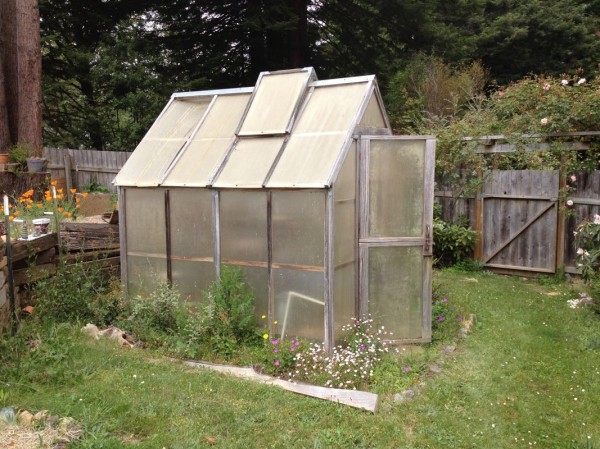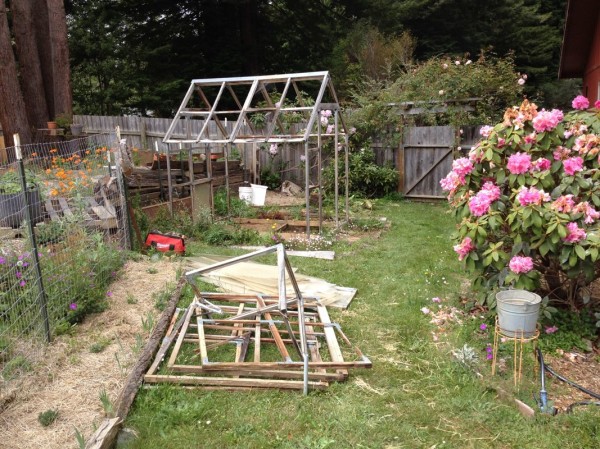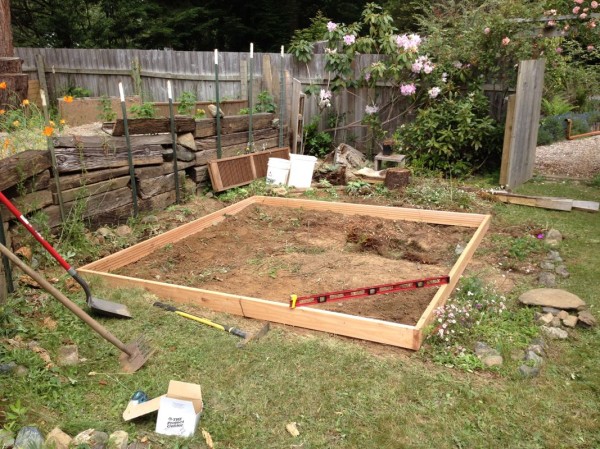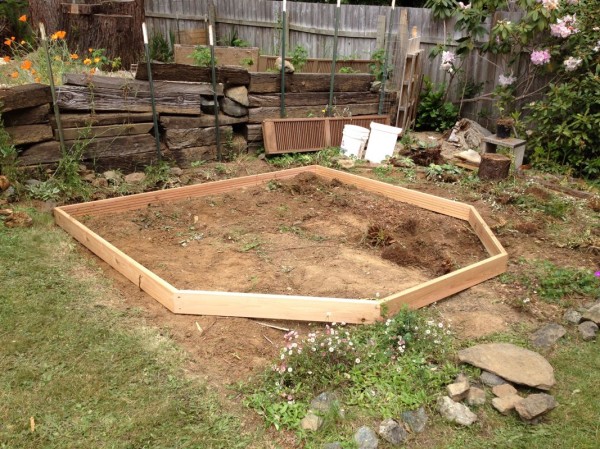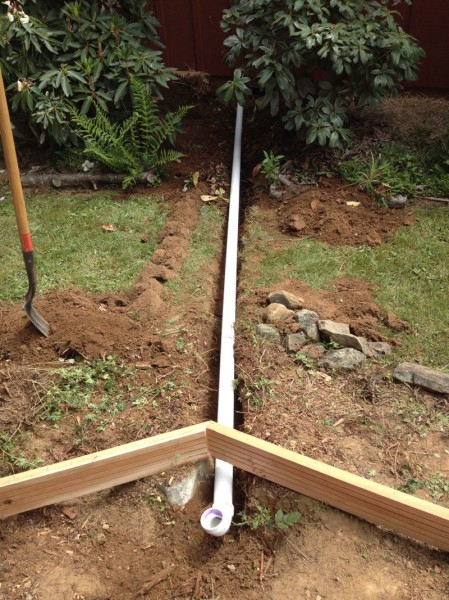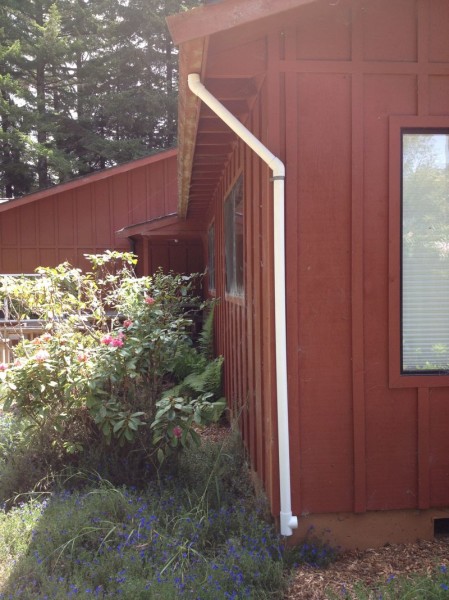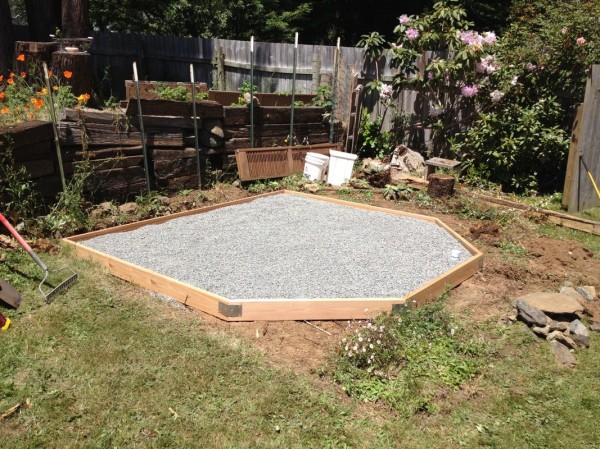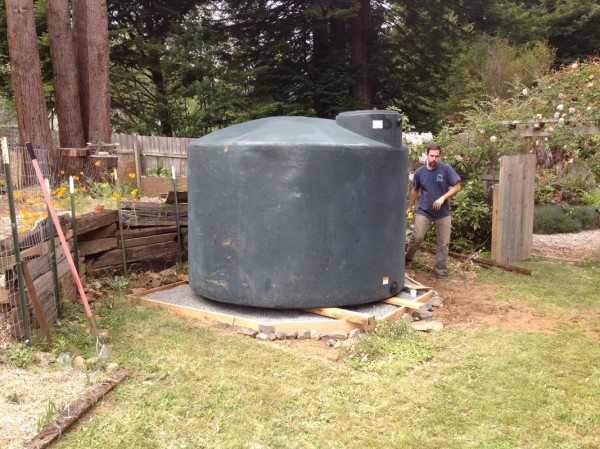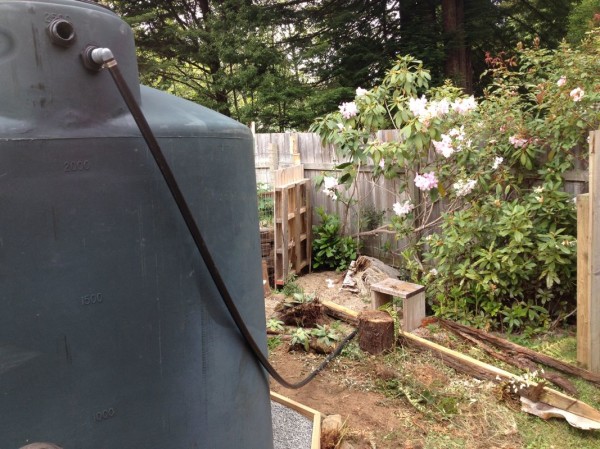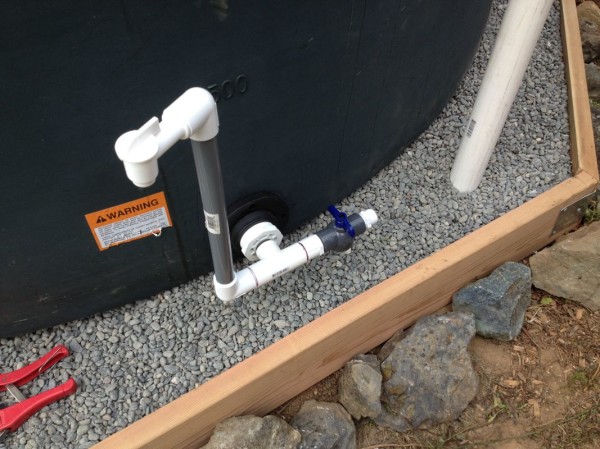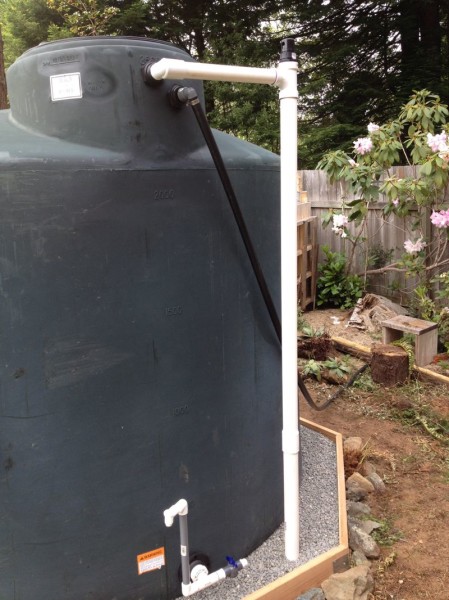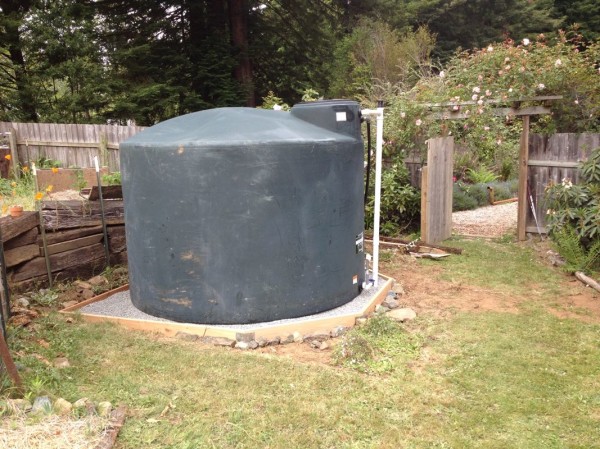Journal #45: Defying the Drought, Pt. 1
by Miles Raymer
California’s recent drought has been scary. Even in Northern California, where the water situation is considerably better than down south, people are realizing that the future of California’s water situation will look much different than its past. Though many improvements will be large, publicly-funded infrastructure projects, individuals can also take action to lessen the effects of drought.
Beyond the little tricks that save a drop here and there around the house, my family’s most significant act of water conservation thus far has been switching from hose watering to drip irrigation in our garden. This year, we’re taking that system to the next level by putting in water catchment. This system will divert rainwater from our roof into a storage tank, which will be connected to the drip irrigation.
To get started, I tore down our old greenhouse to make room for the 2,500-gallon tank.
The wooden frame is in pretty bad shape, but I set aside the greenhouse panels, which hopefully will get reused by our friends Jesse and Adam, who just moved into the neighborhood and have been doing a lot of home improvement projects.
With the space cleared, Dan from High Tide Permaculture came to install the runoff plumbing and storage tank. Dan is a tall, gregarious fellow with the unmistakable fortitude and jocularity of a certified Permie. He quoted us an excellent price, installed in just one day (with my help), and also came in slightly under-bid. Needless to say, we were thrilled with his work.
We put this frame together, and then Dan cleaned the gutter while I leveled the frame as best I could. Next, we softened the eastern corners for a better aesthetic.
Most of the piping from the roof to the tank is exposed, and runs parallel with the house, but we needed to trench the last few feet to the tank.
After lunch, Dan picked up the tank, and we rolled it into position.
Next, Dan put in an overflow line, for when the tank fills up.
This overflow line currently ends just a few feet from the tank, but eventually I will lengthen it to loop back toward the garden. Then I can cap the line and drill holes every foot or so to create passive drip irrigation for our fruit trees along the fence.
This outflow setup has a spigot for watering cans (left) and a drain with a shutoff that will eventually get hooked up to our drip irrigation line (right).
When it comes to getting the water from the roof into the tank, this is a completely passive catchment system. Since the top of the tank is lower than the gutter, the water coming off the roof will create enough pressure to travel up this pipe and into the tank. As Dan put it, “We’re on the cutting edge of ten thousand-year-old technology.”
Although our system is now ready to begin storing rainwater, we still need to do a few more things to hook it up to the irrigation system. These include trenching and piping from the tank to the irrigation line, hooking up a pump that can create enough pressure for the drip irrigation, and pouring a small concrete pad for the pump to sit on. We had our plumber Bobby come over and advise me about how to proceed, and I should be able to do everything except the final plumbing myself. It will take some doing, however, so we’re going to wait to tackle those projects until Jessie and I return from our summer road trip in August.
For now, we’re potentially 2,500 gallons more water efficient than a week ago. Not bad.
